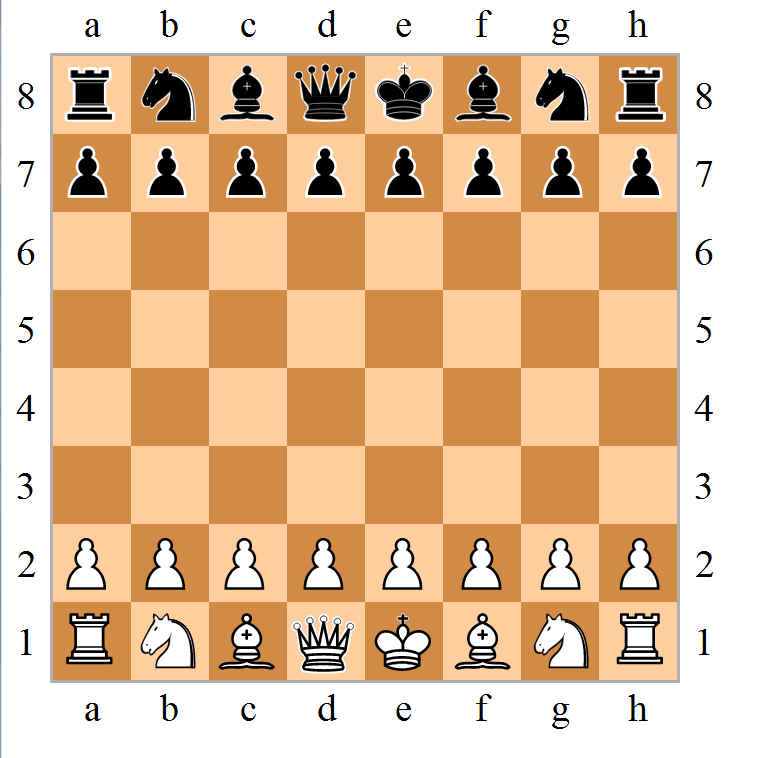Chess, often referred to as the "game of kings, inches is not only a battle of wits but also a strategic work of art played out about a checkered battlefield. Central to this specific game is the exact setup in the chessboard, laying the inspiration with regard to every move and countermove. In this kind of guide, we delve into the intricacies of chessboard set up, exploring the relevance of each piece's placement and the strategic principles behind it.
Understanding the particular Chessboard:
Before sampling in the setup, it can essential to understand typically the layout from the chessboard. The standard chessboard consists of sixty four squares arranged in an 8x8 main grid. Each player handles 16 pieces, like one king, 1 queen, two rooks, two knights, 2 bishops, and 8 pawns. The plank is broken into 2 halves, with each player controlling 1 half.
Setup and even Placement:
The chessboard setup is symmetrical, with each person mirroring the other peoples placement. The back again row, also recognized as the 1st rank, is exactly where the major pieces are positioned. Here is the setup through each player's point of view:
Rooks (R): Positioned in the sides of the plank (a1 and h1 for White, a8 and h8 regarding Black). Rooks are usually powerful pieces that will excel in open up positions and may control entire data files.
Knights (N): Situated beside the rooks (b1 and g1 for White, b8 and g8 regarding Black). Knights include unique movement patterns, making them invaluable regarding manipulating the center and executing tactical maneuvers.
Bishops (B): Located beside the knights in battle (c1 and f1 for White, c8 and f8 intended for Black). Bishops excel in diagonally open positions and do the job in tandem in order to control key squares.
Queen (Q): Positioned on the central pillow of its coloring (d1 for White, d8 for Black). The queen is definitely the most effective piece, capable involving both offense and even defense, and takes on a pivotal function in controlling typically the board.
King (K): Added to the remaining central square (e1 for White, e8 for Black). Whilst initially vulnerable, the king's safety will become paramount as the game progresses, often top rated to castling with regard to protection.
Pawns (P): Occupy the 2nd rank, forming a new protective barrier inside front of the particular major pieces. Pawns will be the backbone associated with the defense and serve as typically the vanguard for controlling territory.
Strategic Things to consider:
The setup from the chessboard is not necessarily merely about putting pieces arbitrarily but rather about setting the stage intended for future maneuvers and even tactics. Here are some proper considerations to keep in mind throughout setup:

Charge of the Center: Central squares (d4, d5, e4, e5) are crucial for controlling the particular board and starting attacks. Positioning pieces to exert affect over the center is a fundamental principle of chess strategy.
Piece Skill: Each piece have to support the other folks, creating a good synergy on the board. Knights and even bishops, for example of this, often complement every other's strengths, covering each other's weak points.
King Safety: Guaranteeing the safety of the king is vital. Castling early can offer the king along with shelter behind the wall of pawns and rooks, although also activating typically the rook for potential future attacks.
Mastering the chessboard set up is an vital thing you want to do when becoming the formidable player. By understanding the relevance of each piece's placement and keeping to strategic concepts, players can obtain a crucial edge right from typically the start of the particular game. Whether if Chess board setup 're a newcomer or some sort of seasoned player, having to pay attention to typically the nuances of chessboard setup can substantially improve your gameplay and even pave the approach for strategic excellence.
